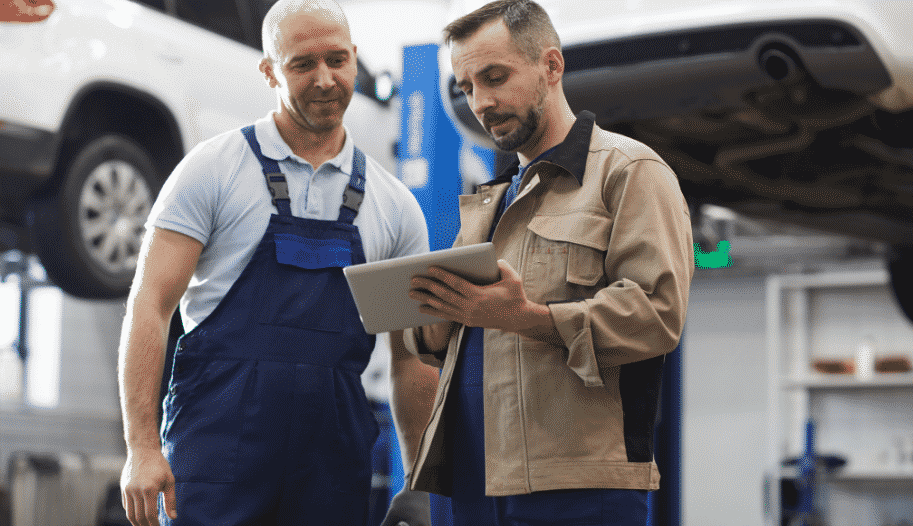According to IBISWorld, the United States has roughly 258,000 auto mechanic shops, making auto repair a $63 billion sector.
However, how profitable are vehicle repair shops, particularly tiny auto repair shops?
Though overall sales are vital, business owners need solid margins to stay afloat. Therefore, it’s critical to understand how to run an auto repair shop cost-effectively while still providing excellent service to consumers, whether setting prices for services or minimizing expenditure on materials and personnel.
Focus on these six areas to give your mechanic shop revenue a tune-up.
1. Workforce
The experience and skill of your team determine the quality of your services. Therefore, pay your employees competitive wages to attract good talent. Examine local classified advertisements for hourly earnings. While it may be tempting to hire cheap and unskilled staff, unless you plan to invest a significant amount of time and money in training, it could be a losing proposition in the long term.
A qualified, skilled individual can usually finish projects faster and with fewer mistakes. Set your fees according to how long it takes staff to complete specific jobs. Tracking staff productivity can aid in the creation of a helpful timeline database.
A coolant flush, for example, could take an hour to complete, whereas a brake replacement could take two hours.
Having timeframes can help you develop more realistic estimates, which will keep consumers pleased, whether you integrate labor charges into your prices or bill clients an hourly rate separately.
2. Plan ahead of time
Paying fair salaries is a good start, but you should also make sure you’re getting the most out of them. For example, when your car repair shop is slow, having staff on the clock is a waste of money. Instead, keep labor costs down by letting customers plan appointments to know how many personnel you’ll need and when they’ll be needed. So you don’t have to deal with no-shows, use reminder calls or messages.
3. Investing Expenses
Your profitability is determined by your key expenditures, such as rent or mortgage payments and equipment purchases, in addition to your work. For auto repair shops, having a suitable location is crucial. Instead of tying up a substantial percentage of your equity on a down payment and a commercial mortgage, you might be able to save money upfront if you rent your premises.
On the other hand, owning your property shields you from rent increases that could affect your bottom line. You must also purchase and maintain equipment in good functioning order. The pace and quality of your job may be affected if you use old or unreliable machinery. Equipment leasing might be a fantastic option to receive the current, dependable equipment you need to provide a high-quality repair service to your consumers. In addition, equipment financing may be a viable option for spreading the cost of critical equipment over time.
4. Daily Expenses
You can also protect your profit margins by keeping track of your daily spending. For example, you may be overcharged for proper chemical and oil disposal without even realizing it. Make sure you’re charging enough for your services to cover your costs by doing some research. Also, keep an eye out for credit card transaction costs, which can eat into your profit margins.
Depending on your sales and average order ticket, shop around for the best pricing. For example, some processors charge the same flat price for credit and debit cards, while others offer greater flexibility. Also, acquire rates from your banks, insurance agents, and accounts annually.
5. Promotion
By fine-tuning your marketing plan, you can also improve your bottom line. Marketing is an investment that can help you grow and keep your consumer base, and it’s a crucial aspect of your business plan.
According to AAA, automobile owners spend about 9 cents per mile on maintenance and repairs. According to the Federal Highway Administration, the average motorist puts about 13,500 miles on their car each year, so each customer you acquire and keep might bring in more than $1,200 in revenue every year.
Businesses have a 5 percent to 20% probability of bringing in a new customer but a 60 percent to 70% chance of earning a repeat transaction, according to Invesp. So then, it makes sense to begin by marketing to clients who are already loyal to and enthusiastic about your company. Next, consider delivering exclusive deals to repeat consumers via email. Deep discounts can eat into your profit margin, but other deal programs, like loyalty programs or bundled bundles, can be a more cost-effective method to encourage repeat sales.
To assist busy clients with car maintenance, use a customer management system that sends service reminders. It’s also crucial to attract new clients, and thus every company should establish a digital and social presence.
According to Bright Local, 90% of customers search local businesses and services online, making it simple for them to find you. Make a Google business listing for your company, and make sure your website is search engine friendly as well. Most clients will search for the city name as well as the service they require, so include relevant keywords and phrases throughout your website content, such as “Denver oil change” or “Chicago tire repair.”
6. Reviews and Customer Service
According to Bright Local, 82% of shoppers examine internet reviews before making a purchase. You may be concerned about exposing yourself to criticism, but you must include your company on review sites and maintain control over the discourse. Customers will conduct online research on your car repair shop before entrusting their vehicle to you.
Because horror stories about dishonest mechanics overcharging or performing unneeded repairs are frequent on the internet — and because review sites like Yelp and Google can have an impact on your profit margin — it’s critical that you establish your company as a competent and trustworthy supplier.
Negative feedback is unavoidable, and the ideal method is to respond to the customer’s issues positively, demonstrating how you manage difficulties and criticism to potential customers. By responding to the unfavorable review, you may be able to convert an angry client into one who will return to your store.
What is the profitability of vehicle repair shops?
The profit for an auto repair business depends on how closely you monitor your profit margins and whether you go to great lengths to look after your consumers and company. Of course, keeping expenses low is essential for running a profitable auto repair shop, but customer service is where the rubber meets the road. Keep your consumers pleased, and your business will continue to run smoothly.
Want to learn more about how you can increase cash flow and repeat business for your auto repair shop. Check out our content here, or schedule a consultation with one of our advertising consultants.




